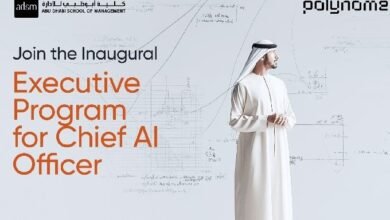Meet the Minds Behind OpenAI’s Research Future
Exploring the Visionaries Steering OpenAI’s Next Chapter

▼ Summary
– OpenAI executives Chen and Pachocki discussed balancing research and product development during a London interview, where OpenAI established its first international office in 2023.
– They emphasized coding and math as critical for advancing all-purpose AI models and clarified their views on AGI (artificial general intelligence).
– OpenAI’s superalignment team, created to address superintelligence risks, disbanded after cofounder Ilya Sutskever’s departure.
– GPT-5’s anticipated August launch has faced delays, sparking speculation about OpenAI’s challenges in meeting high expectations.
– Chen oversees research teams and strategy, while Pachocki sets the technical roadmap, reflecting their complementary leadership roles.
During a recent visit to London, where OpenAI established its first international office last year, I had the opportunity to sit down with key researchers Chen and Pachocki. Our conversation delved into the delicate balance between cutting-edge research and product development, their belief in coding and mathematics as foundational elements for advanced AI models, and their perspective on artificial general intelligence (AGI). We also touched on the dissolution of OpenAI’s superalignment team, originally led by cofounder Ilya Sutskever, which was tasked with addressing the risks of superintelligent systems before disbanding following his departure.
The timing of our discussion was particularly significant, coming just ahead of OpenAI’s highly anticipated release of GPT-5. While reports suggest an August launch, CEO Sam Altman has remained characteristically vague, stating only that it will arrive “soon.” The pressure is palpable, each iteration of OpenAI’s models, from GPT-3 to GPT-4, has redefined industry standards. Yet, delays have sparked speculation about whether the company can deliver a model that lives up to its own ambitious benchmarks, let alone the sky-high expectations of the broader tech community.
For Chen and Pachocki, managing these expectations is just another day at the office. As leaders within OpenAI, they play pivotal roles in shaping the company’s research direction and long-term strategy. Their influence extends beyond internal decision-making, setting the tone for the entire AI industry.
A Glimpse into OpenAI’s London Hub
OpenAI’s primary London workspace is nestled near St. James’s Park, a stone’s throw from Buckingham Palace. However, our meeting took place in a coworking space near King’s Cross, a hotspot for tech innovation with neighbors like Google DeepMind and Meta. The setting was informal yet purposeful, with OpenAI’s head of research communications, Laurance Fauconnet, quietly observing from the end of the table.
Chen, dressed in a maroon polo shirt, exuded a polished, media-savvy demeanor, no surprise given his appearances in OpenAI’s promotional materials, including the recent GPT-4o showcase. Pachocki, sporting a black T-shirt with an elephant logo, had a more introspective presence, often pausing to gather his thoughts mid-conversation.
Despite their contrasting styles, the duo operates as a cohesive unit. Pachocki succinctly outlined their dynamic: Chen oversees research teams and their strategic direction, while he focuses on defining the long-term technical roadmap. Together, they embody the dual forces driving OpenAI’s relentless pursuit of innovation.
(Source: Technology Review)





